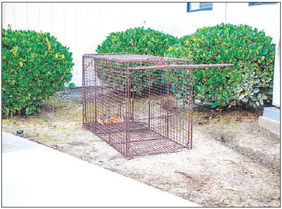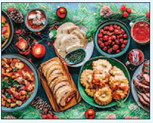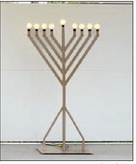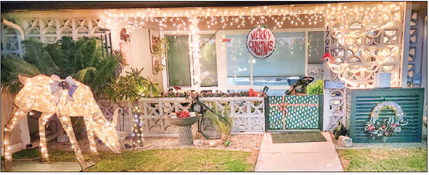GRF sets out coyote traps as mating season begins


WILDLIFE
It’s coyote mating season in California, a period from January through March when coyotes have increased appetites and will likely be seen more than other months.
In December, Security reported 28 coyote sightings. In response to concerns from residents about ongoing coyote sightings, GRF hired All City Animal Trapping in September, who set up three traps in various locations on trust property. Those traps were unsuccessful at trapping any coyotes.
Recently, the traps were moved to new locations and re-baited with raw chicken.
The traps are humane cages, and residents are asked to leave them alone. A licensed professional will handle the removal of traps and coyotes.
It is important for residents to take extra precaution during the courting season. That means supervising pets when they go outside, even if it’s just in the back yard. Coyotes are generally reclusive but, in extreme circumstances, might see household dogs as threats or competition and attack.
If any resident comes across an approaching coyote, it is important to immediately use negative reinforcement, often called hazing.
It’s important to use a variety of different hazing tools so that coyotes don’t get used to redundant or single stimulus devices, sounds or actions.
Hazing techniques include:
• Yelling and waving your arms while approaching the coyote.
• Using noisemakers including voice, whistles, air horns, bells, “shaker” cans full of marbles or pennies, pots, lid or pie pans banged together.
• Using projectiles such as sticks, small rocks, cans, tennis balls or rubber balls The simplest method of hazing a coyote involves being loud and large.
• Stand tall, wave your arms and yell at the coyote, approaching them if necessary until they run away.
It is important not to engage with a coyote, even if it seems sick or lethargic.
Coyotes can live in almost any habitat in California, from arid deserts in the south to wet meadows and foggy coastal regions in the north. Some of the highest population densities on record occur in suburban Southern California.
One way to reduce their proximity to suburban areas is by reducing pet waste, food, and trash left outside, as well as water sources.
Coyote sightings will continue to rise through the summer. March and April will bring denning season—that period during summer after gestation when young and curious pups venture into urban neighborhoods in search of food and new turf.
To report a coyote sighting, call Security at 562-594-4754.




